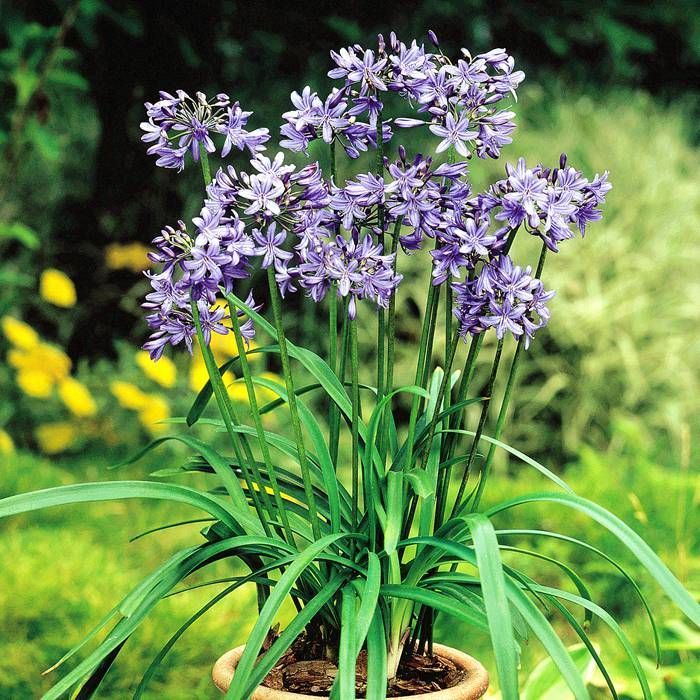Agapanthus Growing Problems: Dirt, Sunlight, and Watering
Releasing the Secret to Successful Agapanthus Farming: Idea for a Flourishing Garden
In the world of gardening, growing agapanthus successfully needs a strategic technique that includes various facets of plant treatment. By recognizing the nuances of agapanthus growing, one can produce an atmosphere where these plants prosper and grow abundantly.
Planting Agapanthus: Finest Practices
When growing Agapanthus, appropriate soil prep work is necessary for ensuring effective growth and development of these beautiful flowers. Agapanthus, commonly referred to as Lily of the Nile or African lily, prospers in well-draining soil with a somewhat acidic to neutral pH level - Agapanthus. Before growing, it is important to change hefty clay dirts with organic matter such as garden compost or peat moss to boost water drainage and supply crucial nutrients for the plants
To plant Agapanthus, choose an area that gets complete sunshine to partial color, as this will promote healthy and balanced growth and abundant blooming. Dig a hole two times the diameter of the plant's origin sphere and put the Agapanthus at the very same depth it was formerly expanding. Gently backfill the hole with dirt, pushing down securely to get rid of any type of air pockets around the roots.
Water the recently grown Agapanthus thoroughly and proceed to maintain the dirt equally damp, particularly throughout the plant's active growing period. Agapanthus. Using a well balanced plant food once a month can even more sustain the plant's growth and flowering. By adhering to these finest techniques for planting Agapanthus, you can develop a magnificent display of these fascinating blossoms in your yard
Ideal Soil Conditions for Agapanthus
For optimum growth and blooming success of Agapanthus plants, guaranteeing the dirt conditions are ideal is critical. Agapanthus likes dirt that is rich in nutrients, so including a balanced fertilizer during the expanding period can promote healthy growth and dynamic blooms.

Watering and Fertilizing Tips
To guarantee healthy and balanced development and vibrant blooms, proper watering and feeding methods are crucial for effective Agapanthus cultivation. Agapanthus plants gain from normal watering, particularly during the growing period. It is recommended to water deeply when a week, guaranteeing the soil is moist yet not saturated. Throughout heat or in pots, even more constant watering may be necessary to prevent the soil from drying completely.
When it concerns feeding Agapanthus, a well balanced plant food with equal components nitrogen, phosphorus, and potassium can be used in the springtime to advertise healthy growth and flowering. Slow-release fertilizers are ideal for supplying nutrients slowly over an extensive period. Prevent over-fertilizing, as this can lead to extreme foliage growth at the cost of blooms.
In addition, including organic matter like compost right into the More Info dirt can boost nutrient levels and enhance soil structure, helping in the overall wellness of the Agapanthus plants. By complying with these watering and fertilizing tips, gardeners can guarantee their Agapanthus plants grow and produce sensational screens of blossoms.
Trimming and Deadheading Techniques
Correct pruning and deadheading techniques play a crucial duty in keeping the health and wellness and visual appeals of Agapanthus plants, enhancing the crucial practices of watering and feeding for successful growing. Trimming Agapanthus includes removing spent blossom heads, dead or yellowing fallen leaves, and total shaping of the plant to promote much better growth. Deadheading, the process of getting rid of discolored flowers, not just improves the plant's look yet additionally urges more flowering.
When deadheading Agapanthus, it is a good idea to snip off the flower stem at the base making use of sharp, clean shears. This procedure reroutes the plant's energy from seed manufacturing back right into origin and vegetation growth, advertising a much healthier and much more robust plant. Normal deadheading can extend the flowering duration of Agapanthus and prevent self-seeding, which can cause congestion.
In regards to pruning, Agapanthus generally take advantage of a light trim after flowering to clean up the plant and motivate fresh growth. Cutting down the invested blossom stems and removing any kind of dead or damaged foliage aids maintain the plant's vitality and overall look. However, it is important to avoid reducing into the crown of the plant, as this can weaken its wellness.

Protecting Agapanthus From Pests and Diseases
Executing effective parasite and illness management approaches is important to safeguarding the wellness and vitality of Agapanthus plants in growing. One typical parasite that influences Agapanthus is the Agapanthus borer, a caterpillar that tunnels into the plant, creating damages to the flowers and leaves.
In enhancement to pests, Agapanthus are vulnerable to diseases such more as origin rot and fungal fallen leave places. By staying watchful and resolving bug and illness concerns without delay, gardeners can assist their Agapanthus prosper and flourish.

Final Thought
In final thought, effective farming of agapanthus needs proper growing techniques, excellent dirt problems, adequate watering and feeding, regular pruning and deadheading, and defense from parasites and illness. By complying with these techniques and tips, gardeners can make sure a growing garden full of attractive agapanthus blossoms. Agapanthus. Remember to keep constant care and attention to information to advertise the health and durability of these spectacular plants
When planting Agapanthus, proper dirt prep work is crucial for making certain successful development and advancement of these beautiful blossoms.Water the recently planted Agapanthus extensively and continue to keep the dirt uniformly damp, particularly during the plant's active growing season.For ideal development and blooming success of Agapanthus plants, making Website sure the dirt conditions are suitable is important. When planting or hair transplanting Agapanthus, ensure the dirt is well-prepared to give the required foundation for the plants to establish themselves successfully. One typical insect that affects Agapanthus is the Agapanthus borer, a caterpillar that tunnels right into the plant, triggering damages to the leaves and blossoms.